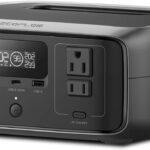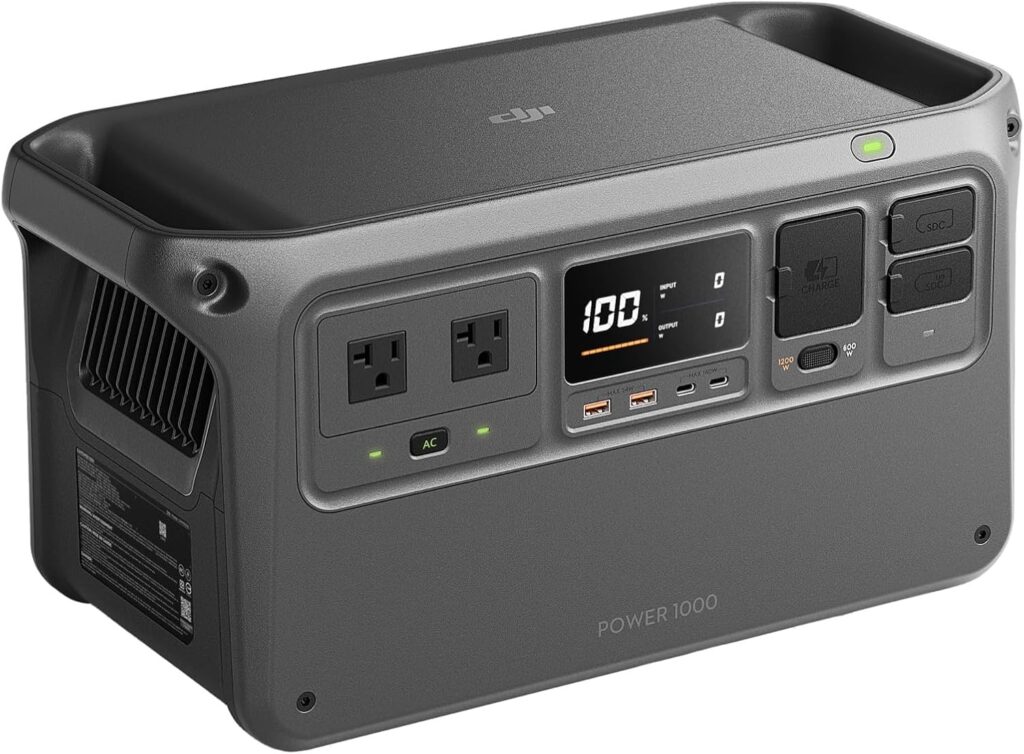
DJI Power 1000
- Battery Capacity: 1024Wh
- Output: 2200 Watts
- Dimensions: 17.6 x 8.8 x 9 inches
- Weight: 32.6 lbs
- Outputs: 8
I may earn commission at no cost to you
DJI, known for its innovative drone technology, has entered the portable power market with the DJI Power 1000. This power station aims to provide reliable energy for various situations, from outdoor excursions to home backup power. Let’s examine its specifications, capabilities, charging methods, ideal uses, and real-world user experiences.
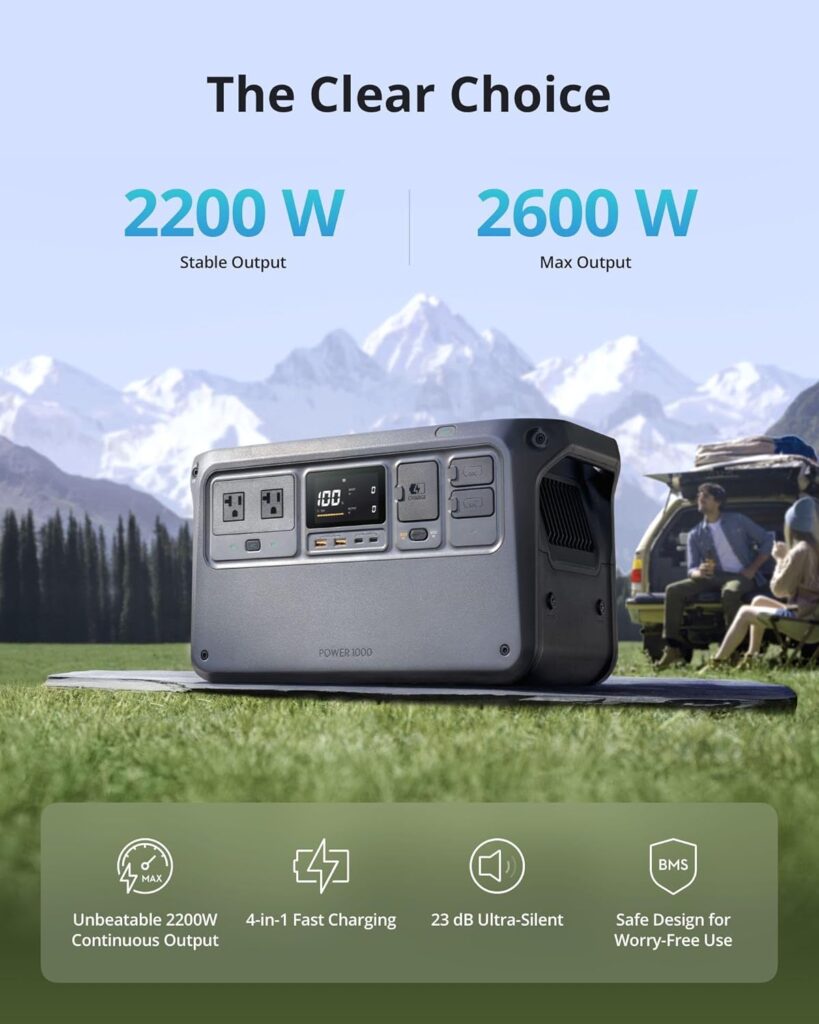
Detailed Specifications and Core Features
The DJI Power 1000 is a feature-rich portable power solution. Here’s a breakdown of its key specifications:
- Battery Capacity: 1024Wh (Watt-hours) using LiFePO4 (Lithium Iron Phosphate) battery technology for enhanced safety and longevity.
- Power Output: 2200W continuous power delivery, with a short-burst capability of 2600W (up to 30 seconds) and a peak surge capacity of 4400W.
- Output Connections:
- Two standard AC outlets
- Two USB-C ports (up to 140W output each, supporting PD 3.1)
- Two USB-A ports
- One SDC port
- One SDC Lite port
- Input Options: AC power for fast charging, connections for solar panels, and a car charging input.
- Display: A built-in color screen displays input and output power levels, battery charge status, and other relevant information.
- Additional Features:
- Rapid AC charging (reaching 80% charge in approximately 50 minutes).
- Multiple recharging methods (wall outlet, solar panels, or a car).
- Quiet operation during recharging (around 23 decibels).
- Durable construction with a built-in handle.
- Two standard threaded mounting points.
The use of LiFePO4 batteries is a significant advantage, offering a longer lifespan (around 4000 charge cycles) and improved safety compared to traditional lithium-ion batteries. The strong power output and diverse output ports allow the Power 1000 to power various devices, from small electronics to larger appliances and tools.
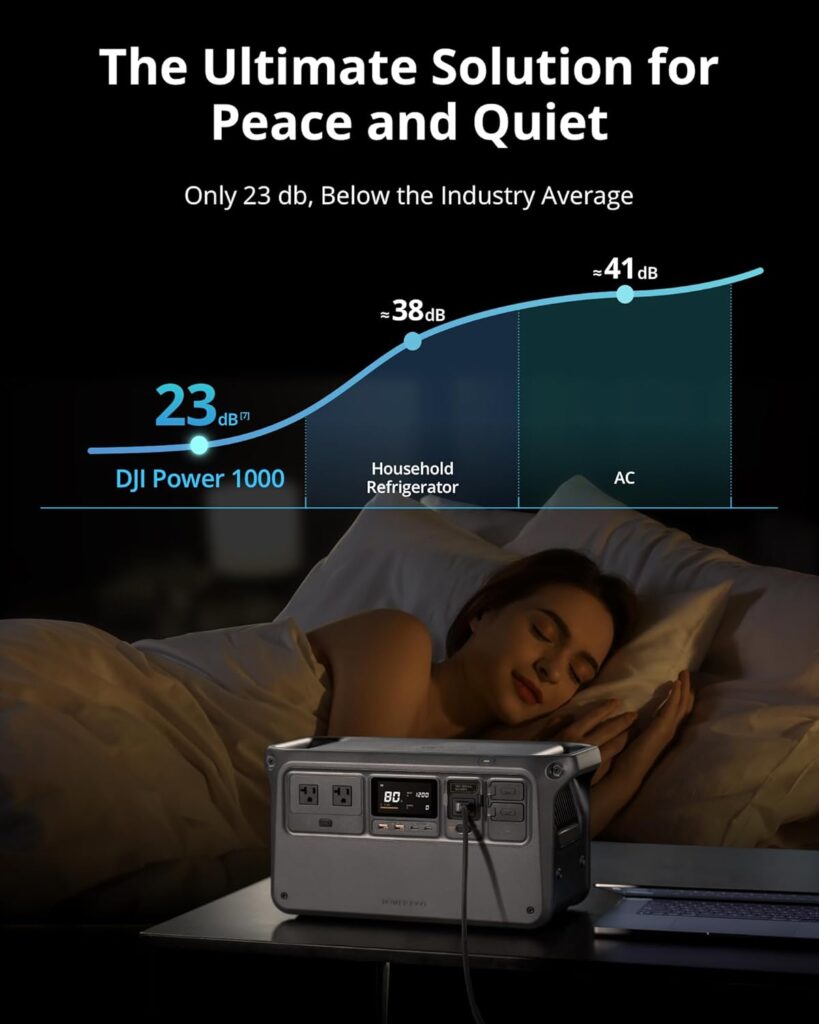
Charging Speeds and Solar Compatibility
A key feature of the DJI Power 1000 is its fast charging. Using a standard wall socket, it can charge from empty to 80% in about 50 minutes using the fast charge setting. A full charge takes approximately 70 minutes. This quick turnaround is beneficial for those needing to quickly replenish their power supply.
Besides AC charging, the Power 1000 supports solar charging, making it suitable for off-grid use. It is compatible with various third-party solar panels with appropriate connectors. The solar charging time will depend on the panels’ wattage and sunlight conditions.
Car charging is also an option, providing another way to recharge while traveling. However, this is the slowest method, potentially taking up to 14 hours for a full charge.
Ideal Usage Scenarios
The DJI Power 1000’s versatility makes it useful in several situations:
- Outdoor Activities: Campers, road trippers, and overlanders can use it to power lights, charge devices, and run small appliances while off the grid.
- On-Location Work: Photographers, videographers, and other on-location professionals can power their equipment.
- Home Emergency Preparedness: During power outages, it can keep essential devices running.
- Remote Work and DIY: Power tools and other equipment can be used in areas without traditional power sources.
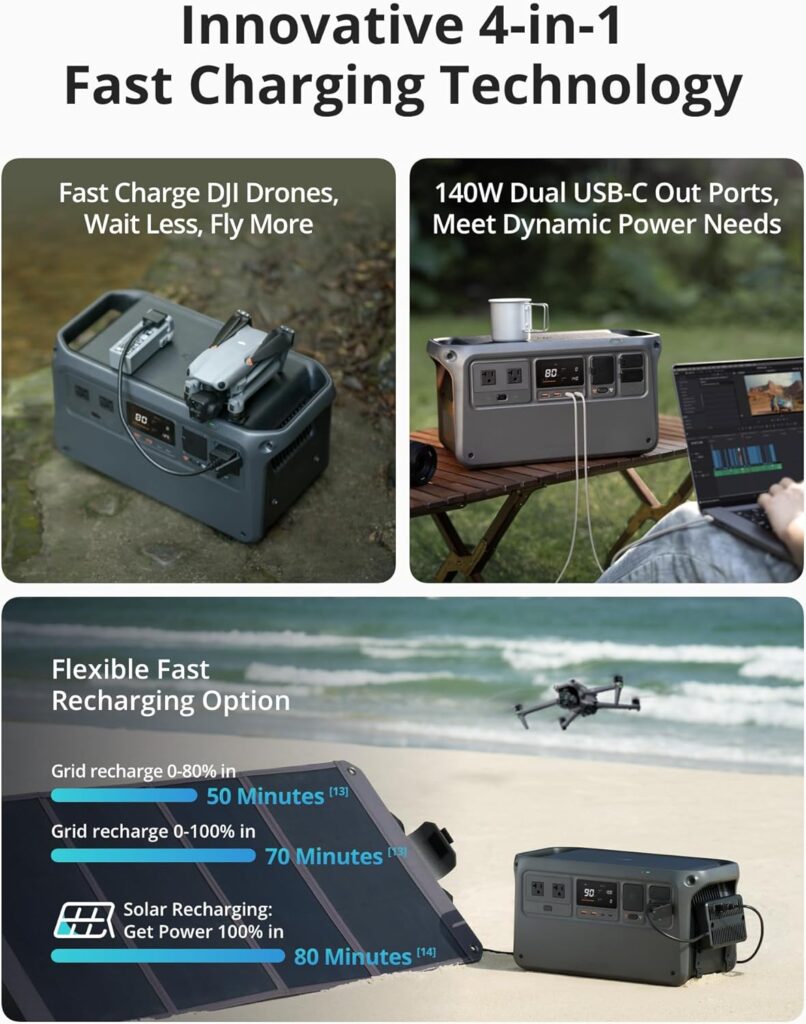
User Experiences: Strengths and Weaknesses
To provide a balanced perspective, let’s consider user feedback:
Strengths:
- Rapid Recharging: Users frequently praise the fast AC charging.
- Strong Power Output: The 2200W continuous output and high surge capacity allow it to power demanding devices.
- Variety of Ports: The numerous output options cater to a wide range of devices.
- Solid Construction: The robust build and LiFePO4 battery chemistry give users confidence in its durability.
- Quiet Operation: The low noise level during charging is a positive feature.
Weaknesses:
- Weight: While portable, it’s not the lightest option.
- Separate Solar Panels: Users must purchase solar panels separately.
- No Battery Expansion: The Power 1000’s capacity cannot be increased with additional battery packs.

Final Thoughts
The DJI Power 1000 is a powerful and adaptable portable power station offering a good mix of features, performance, and durability. Its quick charging, substantial power output, and diverse ports make it suitable for various uses. While it has some minor drawbacks, its advantages generally outweigh them. If you’re looking for a dependable portable power solution, the DJI Power 1000 is worth considering.
